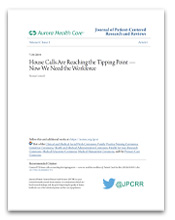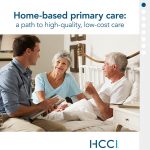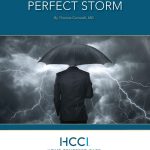Whitepapers
House Calls Are Reaching the Tipping Point — Now We Need the Workforce
 Home-based primary care (HBPC) improves the lives of high-cost, frail, homebound patients and their caregivers while reducing costs by keeping patients at home and reducing the use of hospitals and nursing homes. Several forces are behind the resurgence of HBPC, including the rapidly aging population, advancements in portable medical technology, evidence showing the value of HBPC, and improved payments for HBPC. There are 2 million to 4 million patients who could benefit from HBPC, but only 12% are receiving it. The number of these patients is expected to double over the next two decades. This requires a larger and better prepared HBPC workforce, making St. Clair and colleagues’ article published within this same issue very timely. They showed residents exposed to HBPC had increased interests in providing HBPC in the future. They also found HBPC training fulfilled all 6 Accreditation Council of Graduate Medical Education core competencies and at least 16 of the 22 Family Medicine Milestone Project subcompetencies. Such medical education curricula are necessary to sufficiently develop a future workforce capable of appropriately providing HBPC to an increasing number of patients.
Home-based primary care (HBPC) improves the lives of high-cost, frail, homebound patients and their caregivers while reducing costs by keeping patients at home and reducing the use of hospitals and nursing homes. Several forces are behind the resurgence of HBPC, including the rapidly aging population, advancements in portable medical technology, evidence showing the value of HBPC, and improved payments for HBPC. There are 2 million to 4 million patients who could benefit from HBPC, but only 12% are receiving it. The number of these patients is expected to double over the next two decades. This requires a larger and better prepared HBPC workforce, making St. Clair and colleagues’ article published within this same issue very timely. They showed residents exposed to HBPC had increased interests in providing HBPC in the future. They also found HBPC training fulfilled all 6 Accreditation Council of Graduate Medical Education core competencies and at least 16 of the 22 Family Medicine Milestone Project subcompetencies. Such medical education curricula are necessary to sufficiently develop a future workforce capable of appropriately providing HBPC to an increasing number of patients.
Path To High-Quality, Low-Cost Care Whitepaper
 America’s population is aging – and quickly. More chronically ill and medically complex individuals are having difficulty accessing quality health care than ever before – and the number of at-risk patients continues
America’s population is aging – and quickly. More chronically ill and medically complex individuals are having difficulty accessing quality health care than ever before – and the number of at-risk patients continues
to grow. Approximately 10,000 baby boomers turn 65 every day, and beneficiaries with five or more chronic conditions represent the fastest-growing segment of the Medicare population.
Many of these chronically ill patients are housebound or have mobility issues, which often result in costly
and avoidable hospitalizations. In this current health care landscape, home-based primary care (HBPC) – or
the modern-day house call – is a viable, innovative solution that can help these patients by providing
quality, compassionate care at a more sustainable cost than traditional institutional care, in addition
to addressing future pressures on the United States health care system.
In cooperation with Fierce Healthcare, HCCI talked to experts around the country to get their perspective of how to address this challenge.
Click here to download the whitepaper.
Home-Based Primary Care’s Perfect Storm
Today a perfect storm has developed that is fanning the sails of the modern house call movement.
 Home care medicine can help health systems achieve the Triple Aim – markedly improving the quality of life for our nation’s most complex patients, delivering substantially better experiences for patients and caregivers, and dramatically reducing health care costs.
Home care medicine can help health systems achieve the Triple Aim – markedly improving the quality of life for our nation’s most complex patients, delivering substantially better experiences for patients and caregivers, and dramatically reducing health care costs.
Diverse factors are driving the growing trend toward home-based primary care and aging in place. HCCI founder, Dr. Thomas Cornwell, calls this convergence the “perfect storm” in his report on the state of house call medicine today.
Click here to read Dr. Cornwell’s report.